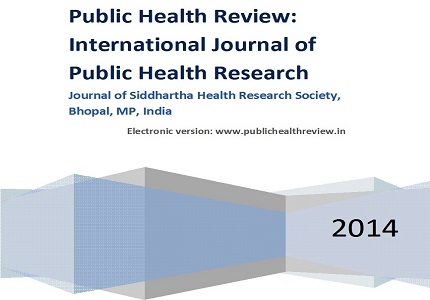Exclusive Breast feeding Practices among Yoruba and Hausa ethnic groups in South West Nigeria: a comparative Study
Abstract
Introduction: Knowledge and attitude of mothers towards the practice of exclusive breast feeding is high, however, in spite of the advantages accrued to its practice, the practice of exclusive breastfeeding is low among breastfeeding mothers. This suggests that knowledge about exclusive breastfeeding does not translate to practice of it. This study examines the practice of exclusive breastfeeding among Yoruba and Hausa ethnic groups in Ile-Ife, South West, Nigeria comparatively.
Methods: A structured questionnaire was administered to 400 breastfeeding mothers of Yoruba and Hausa respectively. Focus group discussions were held with both Yoruba and Hausa mothers and in-depth interview with health officials in the Hausa and Yoruba communities.
Results: Level of awareness of exclusive breastfeeding was found to be high among both categories of mothers (99.6% of Yoruba and 91-8% of Hausa mothers), the level of practice being higher amidst Yoruba (about 32% than Hausa (26%) mothers. Each of perception of effect of EBF on health of mothers and the effectiveness of EBF in spacing children (X2 =.746, P=0.017) was found to be significant in influencing Hausa mothers’ practice of EBF, but not significant for EBF for Yoruba mothers (X2 12.955, P=0.01) but not for Hausa mother. A significant difference was found in the practice of EBF between Yoruba and Hausa mothers (X2 = 56.282, P =0.000).
Conclusion: Yoruba and Hausa mothers face significant challenges in a bid to exclusively breastfeed their babies. Efforts should be made to involve other bodies such as government, religious and civil bodies in campaign programs on EBF.
Downloads
References
2. Nigeria Demographic and Health Survey, 2008. Cited from: http://dhsprogram.com/pubs/pdf/FR222/FR222.pdf on 20th May 2014.
3. Mc Neilly AS, Howie PW, Glassier A,. Lactation and the return of ovulation. In Natural Human Fertility, Social and Biological Determinants. Edited by Diggory P., Potts M., Teper S. Proceedings of the Twenty-third Annual Symposium of the Eugenics Society, London, Basing Stoke, UK: Macmillian Press, pp. 103-117.
4. Anita Bhuyan, Maria Borda, and William Winfrey, (2007). Making family planning part of the PRSP process: A Guide for Incorporating Family Planning programs Into Poverty Reduction Strategy papers (Washington: DC: Constella Future, USAID/Health Policy Initiative: pp. 19.
5. Ogbe JO. Exclusive breastfeeding and children immunization as demographic determinants of child mortality in Delta State. Pakistan Journal of Nutrition,2008; 7(1): 35-39.
6. Stern JM, Konner M, Herman TN. Reichlin S, (1986). Nursing behavior, prolactin and postpartum amenorrhoea during prolonged lactation in American and !Kung mothers. Clin Endocrinol (oxf)1986; 25: 247-258.
7. Campbell OMR, Gray RH . Characteristics and determinants of postpartum ovarian function in women in the United States. Am J. Obstel Gynecol 1993; 169:55-60.
8. Smith D.P. and Benoit F., (1985). Correlates of breastfeeding: A critical review of available information. World Health Statistics Quarterly, 35:92-116. [PubMed]
9. Afifi M . Lactational amenorrhoea method for family planning and women empowerment in Egypt. Singapore Med J,2007; 48:758-762.
10. Aguirre GP, Palloni A, Jones RE. Effects of lactation on postpartum amennorrhoea: Re-estimation using data from a longitudinal study in Guatemale. Pop stud (Camb),1998; 52:231-248.
11. Amperire IP, (2008). Perception and Knowledge on Exclusive breastfeeding Among Women Attending Antenatal and Postnatal Clinics, pp.27-28.
12. Rossetta L. Aetiological approach of female reproductive physiology in lactational amenorrhoea. J Biosoc Sci,1992; 24:301-315.
13. Short RV, Lewis PR, Renfree MB, Shaw G. Contraceptive effects of extended lactational amenorrhoea: Beyond the Bellagio Consensus Lancet,2011; 337:715-717. [PubMed]
14. Senaiumhe AE and Oviawe O. The changing pattern of post partum sexual abstinence in a Nigerian Rural Community Soc. Sci. Med 1986; 23(7):683-686.
15. Vekemans M. Postpartum contraception. The lactational amenorrhea method. Eur J Contracept Reprod Health Care,2007; 2:105-111. [PubMed]
16. Vestermark V, Hoydall CK, Plenov G, Birch M. Postpartum amenorrhoea and breast-feeding in a Danish sample. J Bio Soc Sci1994;26:1-7.
17. Brown KH, Dewey KG, Allen LH, (1998). Complementary Feeding of Young Children in Developing Countries: A review of current scientific knowledge, WHO/UNICEF.

Copyright (c) 2014 Author (s). Published by Siddharth Health Research and Social Welfare Society

This work is licensed under a Creative Commons Attribution 4.0 International License.


 OAI - Open Archives Initiative
OAI - Open Archives Initiative


